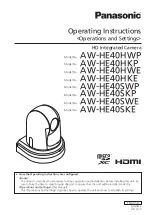
46
TECHNICAL INFORMATION/PHOTOGRAPHY TECHNIQUES
continued
RELATIONSHIP BETWEEN SHUTTER SPEED AND APERTURE
Shutter Speed (sec.)
1/4000 1/2000 1/1000 1/500
1/250
1/125
1/60
1/30
Aperture (f-number)
1.4
2
2.8
4
5.6
8
11
16
The amount of light reaching the film plane is determined by a
comb nation of shutter speed and lens aperture. A shutter speed
of 1/125sec. Iets in twice as much light as a setting of 1/250sec
and only half as much light as 1/60sec An aperture setting of
f/11 lets in twice as much light as f/16, half as much as f/8 Thus,
if the correct exposure for a particular picture-taking situation is
1/500 at f/4, then 1/250 at f/5.6 or 1/125 at f/8 will give the same
exposure.
The table above is one example showing the interrelationship
between shutter speed and aperture. Each combination
produces correct exposure but the effects of the pictures are
quite different. The best combination will depend on the results
you want. Fast shutter speeds freeze motion while slow speeds
produce a deliberate blur. Also, small apertures give greater
depth of field, while large apertures restrict the zone of sharp
focus to the main subject. (Refer to page 48 for details on depth
of field.)
A good rule to follow in preventing camera shake is to select a
shutter speed which is never slower than the reciprocal of the
focal length of the lens in use For example, when using a norma
50mm lens, select a speed no slower than 1/60sec (the closest
number to 1/50). For a 200 mm super-telephoto, use no less
than 1/250 sec., and so forth.
If a slow shutter speed is necessary or the camera selects one
in the automatic exposure modes, attach the camera to a tripod
As an alternative, use an electronic f ash or change to faster film
Summary of Contents for FA
Page 1: ...FA Nikon INSTRUCTION MANUAL ...
Page 48: ...49 Lens set at f 2 Lens set at f 16 ...
Page 77: ...NIPPON KOGAKU K K Nikon ...
















































